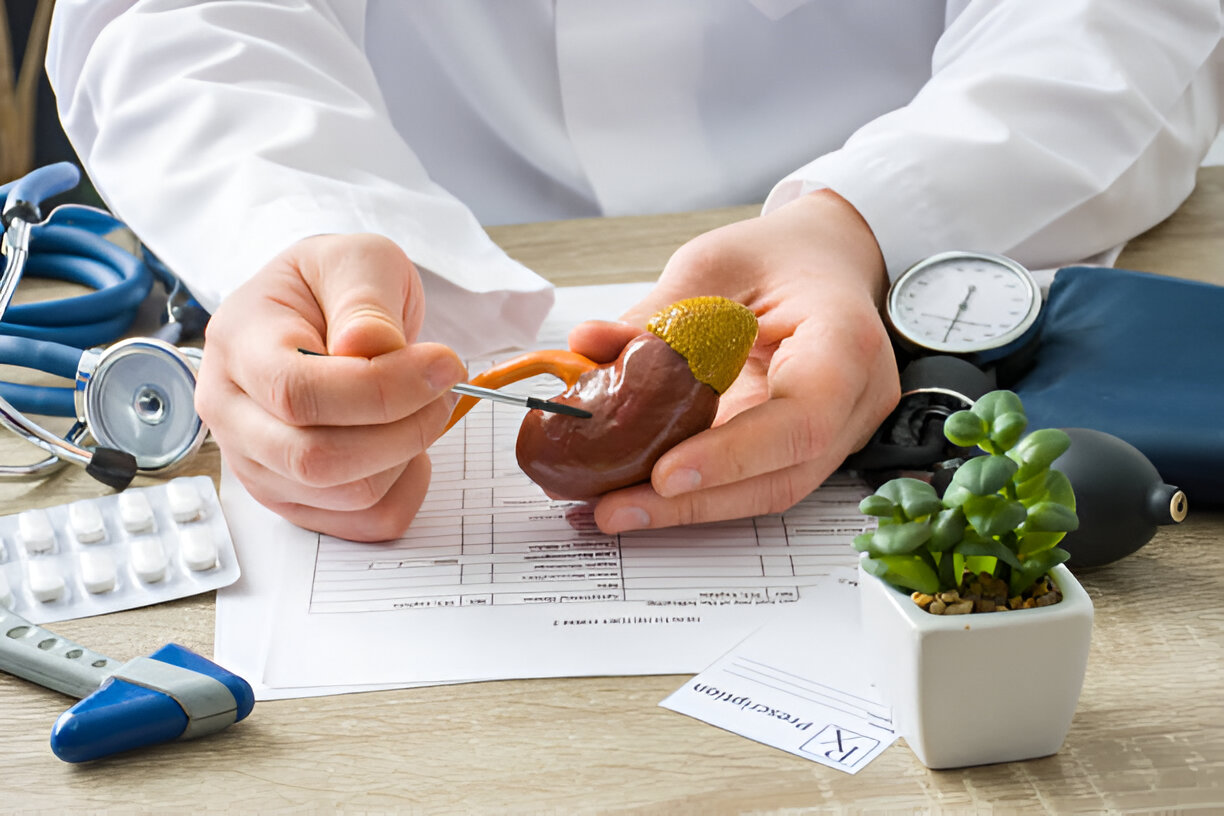
Common Kidney Problems: When to Seek Help
September 6, 2024
Minimally Invasive Laparoscopic Pyeloplasty Surgery in Chandigarh
June 6, 2025Introduction
A kidney transplant is a possibly life-saving procedure for patients with end-stage kidney disease. For many patients, however, finding a suitable donor match can be highly challenging. A swap kidney transplant is an acceptable choice if a living donor is available but the person who will receive it is incompatible.
The new technique enables the exchange of kidneys between two or more donor-recipient pairs, resulting in a successful transplant for all parties. Leading kidney transplant specialist Dr. Neeraj has been instrumental in improving patient access to and the effectiveness of Swap Kidney Transplants. This post will explain what a swap kidney transplant is, how it functions, and the advantages it provides for kidney recipients.
Understanding Kidney Transplantation
Before delving into the specifics of a Swap Kidney Transplant, it’s important to understand the basics of kidney transplantation. A kidney transplant involves replacing a person’s failing kidney with a healthy one from a donor. This can be done using either a living donor or a deceased donor. In most cases, a close relative or loved one is willing to donate a kidney to a patient in need, but unfortunately, not every donor-recipient pair is compatible.
For a successful transplant, the donor and recipient must match in terms of blood type, tissue compatibility, and other immunological factors. If there is no match, the recipient’s body may reject the donated kidney, leading to complications or failure of the transplant.
This is where the Swap Kidney Transplant comes into play—offering a solution for pairs who are incompatible but can still help each other through an exchange.
What is a Swap Kidney Transplant?
A Swap Kidney Transplant, also known as paired kidney exchange, is a procedure that involves two or more pairs of donors and recipients who are incompatible with each other. Instead of one donor giving their kidney directly to their intended recipient, they “swap” kidneys with another pair in a similar situation. This means that each donor gives their kidney to a recipient in another pair, and both recipients receive a compatible kidney, ensuring a successful transplant for everyone.
For example, imagine two pairs of donor-recipient pairs:
- Pair 1: Donor A and Recipient A (incompatible)
- Pair 2: Donor B and Recipient B (incompatible)

In a Swap Kidney Transplant, Donor A would give their kidney to Recipient B, and Donor B would give their kidney to Recipient A. This mutual exchange allows both recipients to receive a compatible kidney, which they otherwise would not have been able to obtain from their original donor.
In some cases, more than two pairs may be involved in a swap, creating a “kidney chain” where multiple exchanges occur simultaneously. Dr. Neeraj has been instrumental in facilitating these complex swaps, ensuring that more patients can benefit from this life-changing procedure.
How Does a Swap Kidney Transplant Work?
The process of a Swap Kidney Transplant involves several important steps, each designed to ensure compatibility and success for all participants. Here’s a closer look at how the procedure works:
-
Identifying Incompatible Donor-Recipient Pairs
The first step in a Swap Kidney Transplant is identifying donor-recipient pairs who are incompatible due to factors like blood type or tissue matching. These pairs may already be in the process of considering a direct kidney transplant, but they discover that they are not a good match. At this point, they are referred to a kidney transplant center that offers paired exchange programs.
Dr. Neeraj and his team work with these patients to assess their medical histories, compatibility factors, and overall health to determine if they are suitable candidates for a Swap Kidney Transplant.
-
Finding a Matching Pair
Once incompatible pairs have been identified, the next step is to find another pair in a similar situation. This is typically done through a national kidney registry or transplant center database, where information about donor-recipient pairs is stored. Using advanced matching algorithms, the system searches for compatible matches between donors and recipients across different pairs.
For example, if Donor A is not compatible with Recipient A but is compatible with Recipient B, and Donor B is compatible with Recipient A, the system will identify this as a potential swap. Dr. Neeraj has been involved in numerous cases where these matches have been made, allowing patients who may have waited years for a deceased donor to receive a living donor kidney through a swap.
-
Conducting Medical Evaluations
Before the transplant can proceed, all donors and recipients must undergo a thorough medical evaluation to ensure they are healthy enough for surgery. This includes tests to assess kidney function, overall health, and the likelihood of a successful transplant. Donors must be in good health and free from conditions that could complicate the surgery or recovery process.
Recipients, on the other hand, are evaluated to determine their ability to accept the kidney and minimize the risk of rejection. Dr. Neeraj’s team provides comprehensive medical assessments for all participants, ensuring that the transplant has the highest chance of success.
-
Scheduling the Transplants
Once the medical evaluations are complete, the transplant surgeries are scheduled. In most cases, all surgeries are performed simultaneously to ensure that the swap takes place without any delays or complications. This means that all donors and recipients are in the operating room at the same time, with teams of surgeons working to remove and transplant the kidneys.
In more complex kidney chains involving multiple pairs, surgeries may be staggered, but they are still carefully coordinated to ensure the success of the exchange. Dr. Neeraj has led numerous successful Swap Kidney Transplant surgeries, demonstrating the importance of careful planning and execution.
-
Post-Transplant Care
After the surgery, both donors and recipients are closely monitored to ensure a smooth recovery. Donors typically recover quickly and can resume their normal activities within a few weeks. Recipients, on the other hand, require lifelong medical care to ensure that their new kidney is functioning properly and that their body does not reject it.

Benefits of a Swap Kidney Transplant
The Swap Kidney Transplant offers several key benefits for patients who are unable to find a direct match with their original donor. These benefits include:
- Increased Chances of Finding a Match
For patients who are incompatible with their living donor, a Swap Kidney Transplant provides an opportunity to receive a compatible kidney from another donor. This increases the chances of finding a match, reducing the time patients spend on the waiting list for a deceased donor kidney.
- Access to Living Donor Kidneys
Living donor kidneys generally provide better outcomes than deceased donor kidneys. They tend to function better and last longer, improving the recipient’s quality of life. By participating in a swap, patients can access the benefits of a living donor kidney, even if their original donor was not compatible.
- Shorter Waiting Times
For patients on the waiting list for a deceased donor kidney, the wait can be years. A Swap Kidney Transplant allows patients to receive a kidney much sooner, often within months of identifying a compatible pair. This can be life-saving for individuals suffering from end-stage kidney disease.
Challenges and Considerations
While the Swap Kidney Transplant offers numerous advantages, there are also some challenges and considerations to keep in mind:
- Coordination of Surgeries: Coordinating multiple surgeries simultaneously can be logistically challenging, especially in cases involving multiple pairs or kidney chains.
- Medical Risks: As with any surgery, there are risks involved, including complications related to anesthesia, infection, or rejection of the kidney.
- Emotional Considerations: The emotional aspects of a swap transplant can be complex for both donors and recipients, as they are participating in a mutually beneficial exchange that involves multiple people.
However, with the expertise of specialists like Dr. Neeraj, these challenges can be addressed, and patients can experience the life-saving benefits of a Swap Kidney Transplant.
Conclusion
The Swap Kidney Transplant is a remarkable solution for patients who face incompatibility with their original donor. By participating in a paired exchange, patients can receive a compatible kidney, significantly improving their chances of a successful transplant and a better quality of life. Dr. Neeraj’s expertise in this area has helped countless patients access this innovative treatment option, offering them a new lease on life.
If you or a loved one is considering a kidney transplant but facing compatibility challenges, a Swap Kidney Transplant could be the solution you’ve been waiting for. Consult with Dr. Neeraj to explore your options and take the first step toward a healthier future with a successful kidney transplant.


